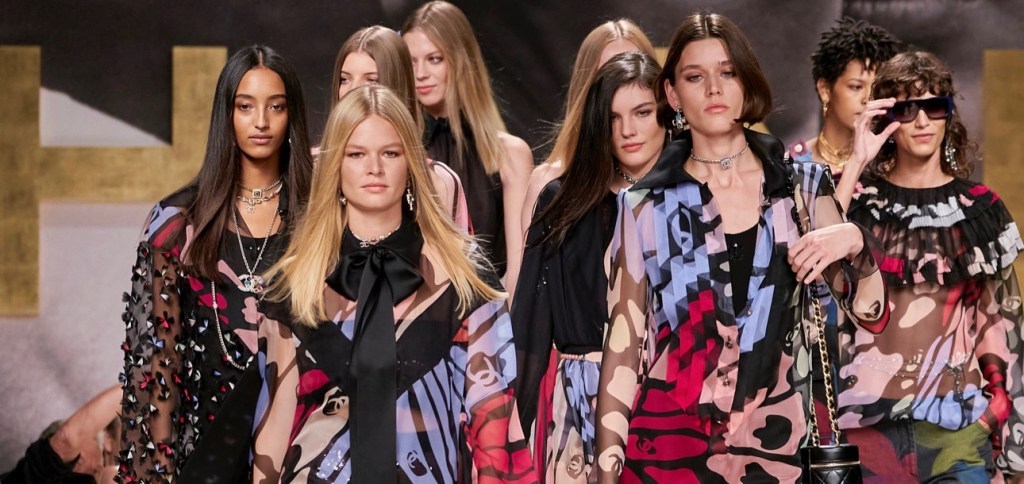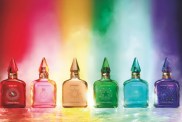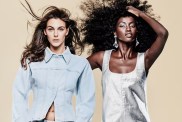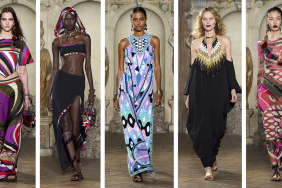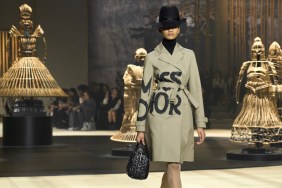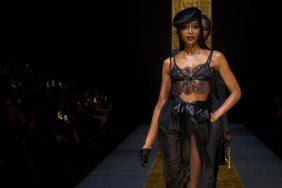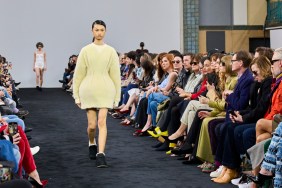Fashion month continues to be impacted by the pandemic. Fashion Month Spring 2022 saw more shows and more castings than the Fall 2021 season. But many designers still opted for lookbooks and smaller presentations.
Although it’s certainly not an excuse, smaller shows led to fewer castings and less diversity in some cases. Despite these challenges, Spring 2022 still managed to make history when it came to racial diversity. It even had some decent gains in size, age and gender representation.
We’ve tallied the totals across New York, London, Milan and Paris. So keep reading to see how Fashion Month Spring 2022 stacked up.
RACE
Spring 2022 is now the most racially diverse season on record. It boasted 4,471 model appearances across 198 shows. And 48 percent of those appearances were by models of color. That’s an almost five point increase in diversity from last season when a little over 43 percent of castings went to nonwhite models.
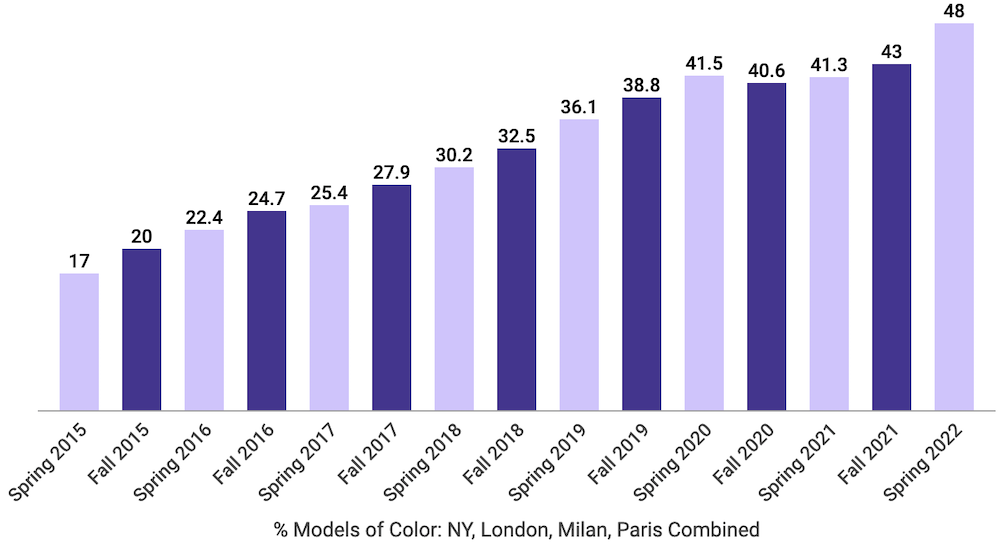
The rise between Spring 2022 and Fall 2021 was larger than the increase between Fall 2021 and Spring 2021. Fall 2021, the previous record holder when it comes to racial diversity, saw a close to 2 percent increase over Spring 2021. Spring 2021 saw an even smaller uptick with a less than 1 percent increase over Fall 2020.
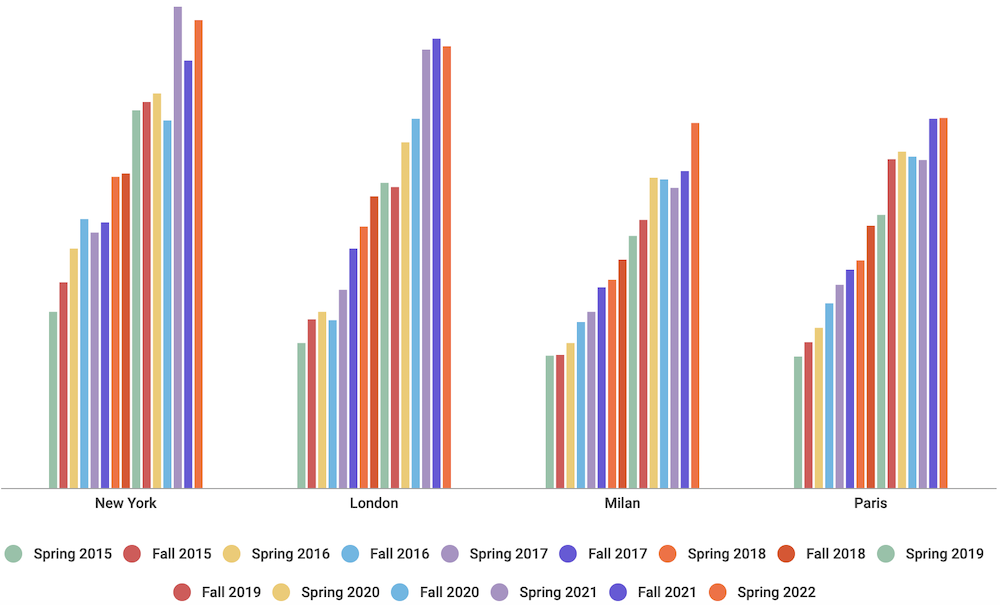
New York Fashion Week Spring 2022 had the most diversity with 55.5 percent of appearances by models of color. (Not surprising since New York is usually the most diverse city.) That’s almost a 5 percent increase over the 50.7 percent models of color during Fall 2021.
Next was London with 52.4 percent models of color down slightly from 53.3 percent in Fall 2021. Then came Paris holding (almost) steady with 43.9 percent nonwhite models compared to 43.8 percent in Fall 2021. Milan brings up the rear with 43.3 percent, a big jump from Fall 2021’s 37.6 percent.
TOP MODELS
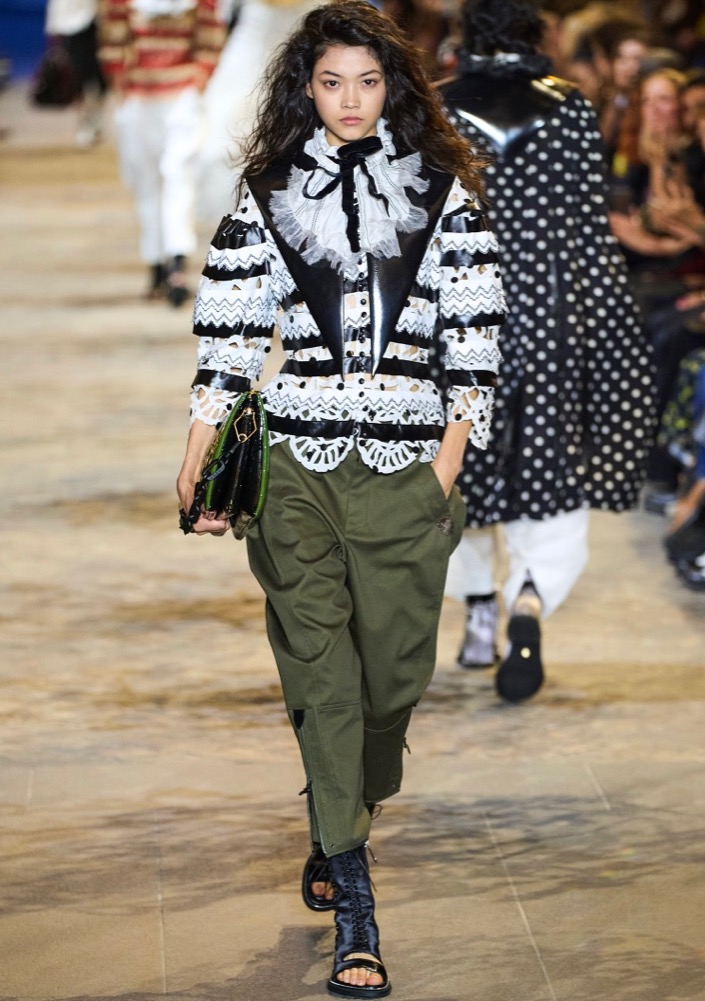
Seven of the top 10 models from Fashion Month Spring 2022 were women of color. Japanese-French stunner Mika Schneider was the most-booked model with 28 castings. She walked for many big names, including Coach, Tom Ford, Burberry, Givenchy, Fendi, Prada, Versace and Louis Vuitton.
American model Quinn Mora was close behind with 27 appearances. Coming in third was France’s own Loli Bahia with 24. American beauty Majesty Amare, Canadian stunner Awar Odhiang, U.S. model Sherry Shi, Chinese catwalker Yilan Hua and Brazilian model Barbara Valente all tied with 22 apiece.
Rounding out the list are South Sudanese-Australian model Akon Changkou and American beauty Cara Taylor both with 21.
PLUS-SIZE
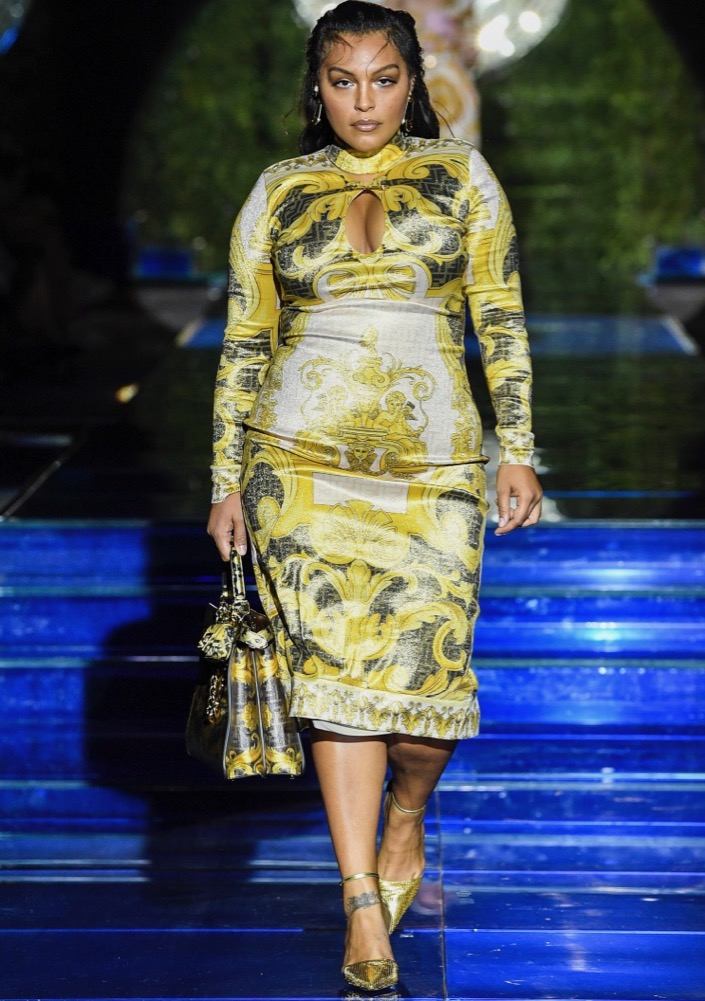
While plus-size models accounted for only 1.81 percent of all castings, there is some positive news to report. That’s more than quadruple the number from Fall 2021. This season there were 81 plus-size model appearances compared to just 19 last season. Spring 2022 is the second highest on record for size diversity. (Only Spring 2020 had more castings with 86.)
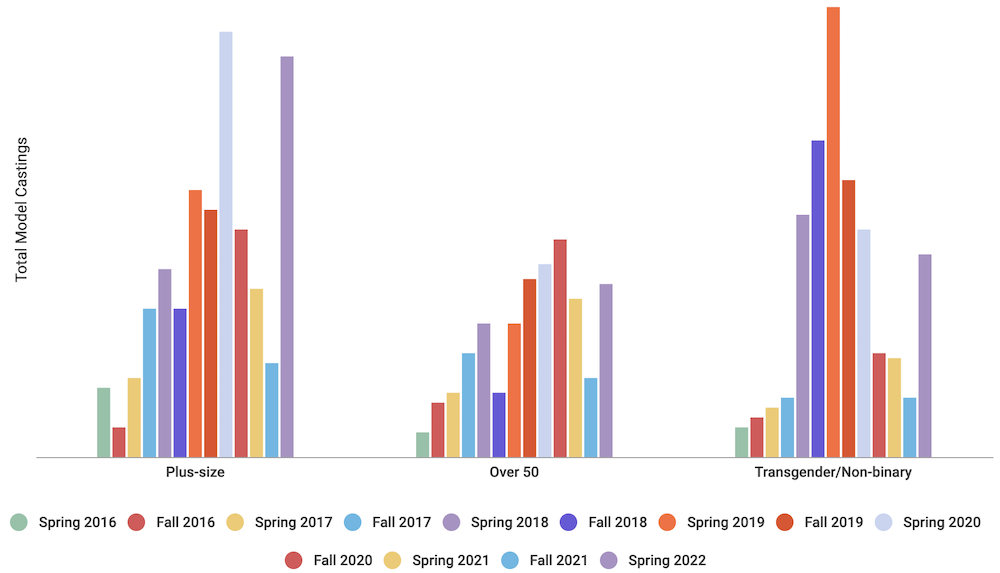
New York booked the most plus-size models for Spring 2022 with 48, followed by Paris with 18, Milan with nine and London with six. In New York, 37 of the 48 appearances (a little more than 77 percent) belonged to models of color. In Paris, 13 of the 18 appearances belonged to models of color (approximately 72 percent). And all of the plus-size model castings (yes, 100 percent) in Milan and London were models of color. Christian Siriano booked the most with nine castings.
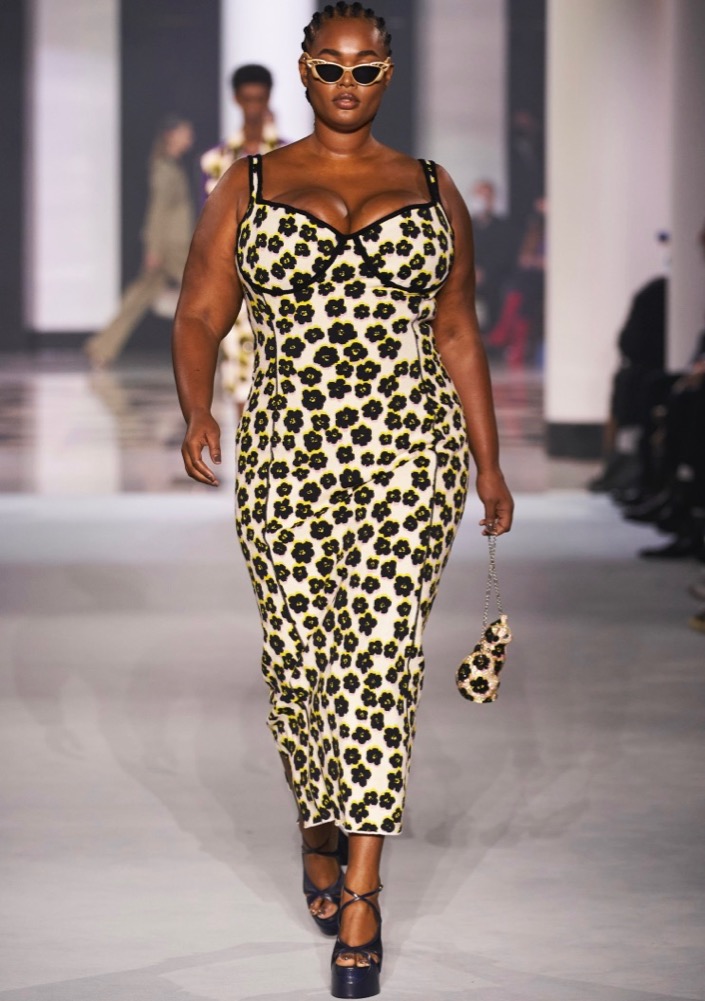
Paloma Elsesser graced 12 runways this season from Brandon Maxwell to Lanvin. She was followed closely by Precious Lee, who booked 11 shows, including Prabal Gurung and Versace x Fendi. Transgender models Jari Jones and Ceval Omar walked for Collina Strada and GCDS, respectively.
TRANSGENDER/NON-BINARY
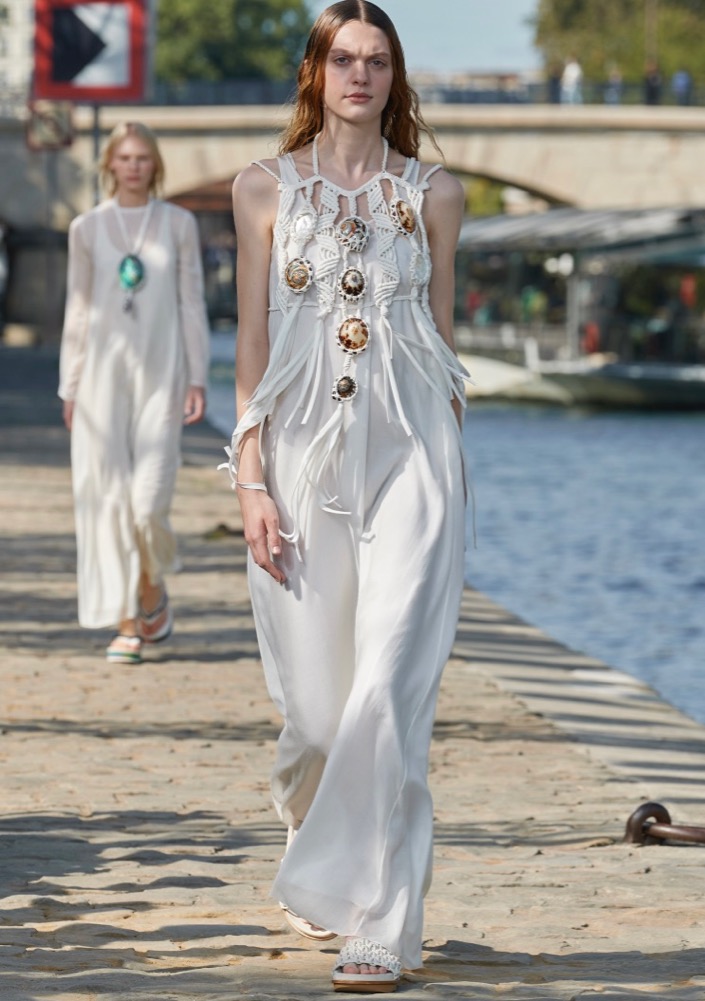
Spring 2022 also saw a bump in gender diversity with 41 appearances for 0.92 percent of total castings. That’s more than triple the number of transgender and non-binary appearances from Fall 2021 when there were only 12. But it’s still way down from Spring 2019’s high of 91 castings.
New York was the most gender-inclusive city with 30 accounting for close to three quarters (a tad over 73 percent) of the total castings. Plus, 15 of those 30 (or 50 percent) were models of color. Paris followed with five castings. Then came Milan with four and London with two.
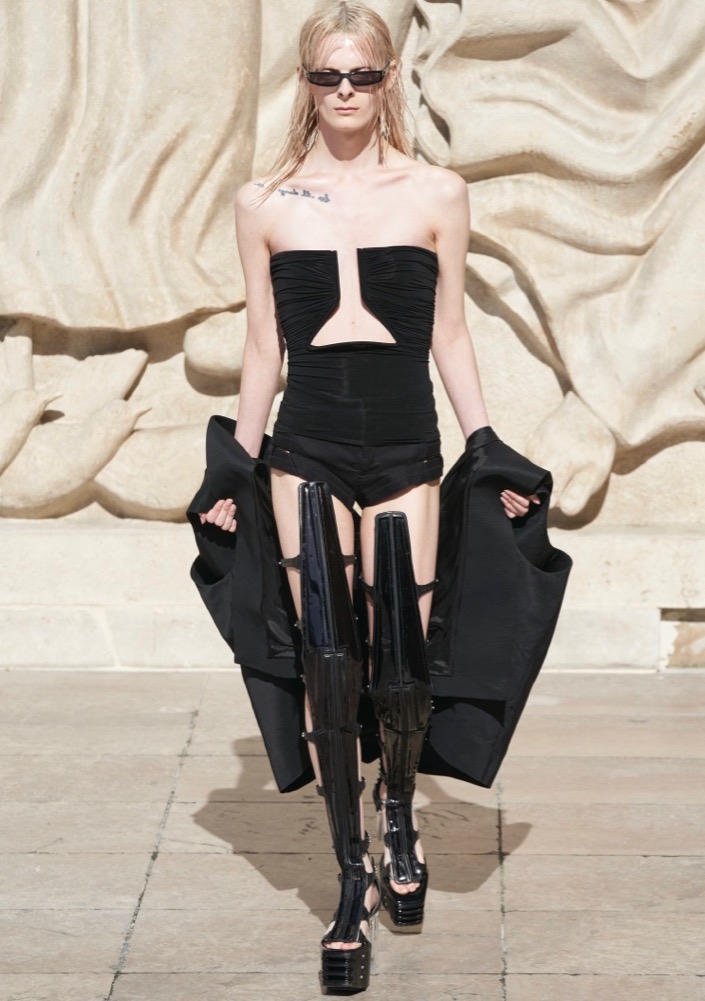
Chromat booked eight transgender and non-binary models, the most of any brand. Non-binary model Noah Carlos was hired by Prabal Gurung and Adam Lippes, while transgender model Jari Jones walked for Collina Strada.
AGE
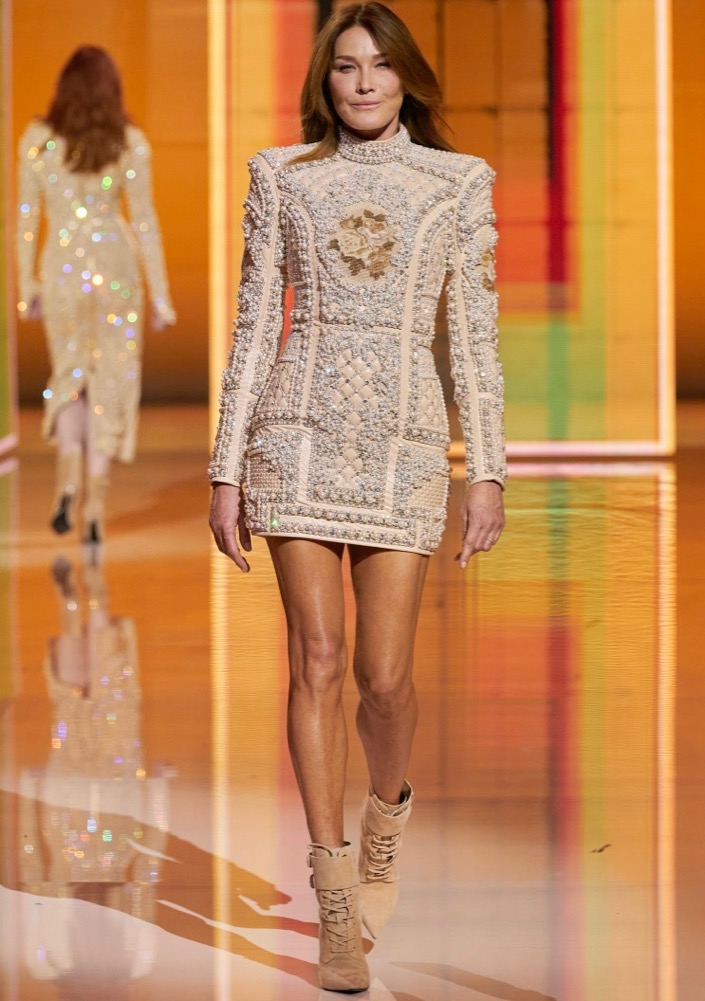
Age diversity was also up from last season. Spring 2022 boasted 35 over-50 models or 0.78 percent of total castings. For Fall 2021, there were only 16 over-50 model appearances. This season is still slightly down from the high of 44 over-50 models in Fall 2020, though.
Paris led the charge this time around with 18 appearances, followed by New York with 12 and Milan with five. Sadly, London had zero.
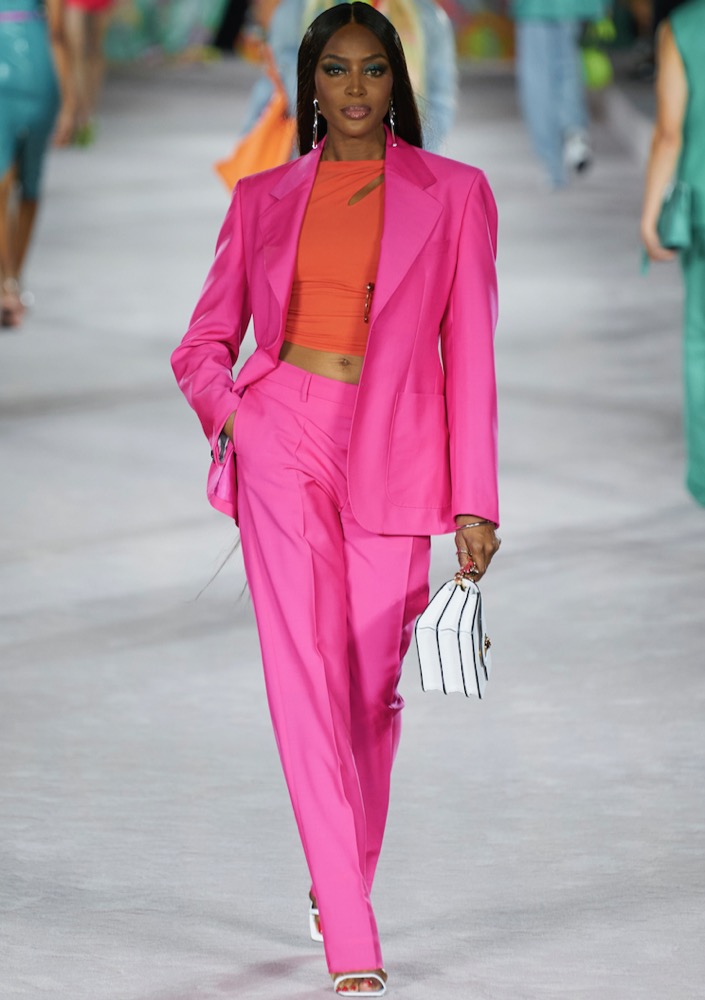
Balenciaga booked the most over-50 models with six. Iconic supermodel Naomi Campbell racked up the most appearances of all the over-50 models. Lanvin, Balmain and Versace were just a few of her highlights.
MOST AND LEAST DIVERSE SHOWS
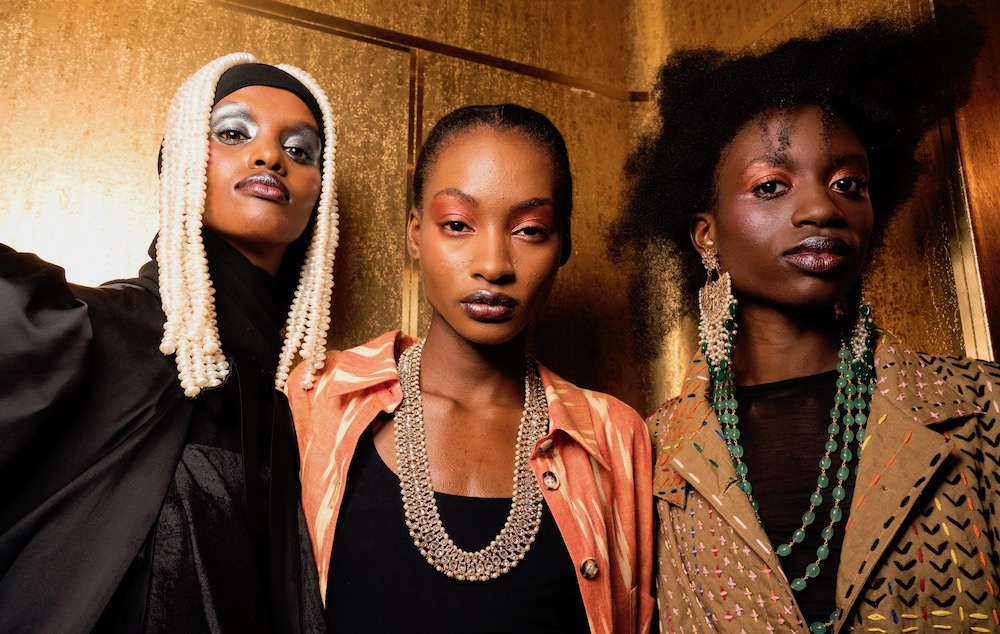
Like last season, there was a mix of actual runway shows and lookbooks. Which can make it difficult to get a true sense of the most and least diverse presentations. While several reached the 100 percent mark, or conversely the 0 percent mark, it was sometimes because designers only hired one or two models.
The brands that hit the 100 percent diversity mark include Badgley Mischka (two out of two models of color) and 3.1 Phillip Lim (two of two) in New York; Eudon Choi (two of two) and Phoebe English (two of two) in London and Andrew Gn (two of two) and Paul Smith (two of two) in Paris.
New York’s Hellessy (one of one), Boss (one of one) and Simon Miller (one of one) also hit 100 percent as did A.P.C. (one of one) in Paris.
When it came to more traditional runway shows and larger presentations, Osman Yousefzada achieved 90 percent diversity (19 of 21). A few shows in New York, London and Paris reached the over 80 percent diversity mark. Kim Shui had 89 percent nonwhite models (33 of 37), Kenneth Ize had 83 percent (10 of 12), Fashion East had 81 percent (25 of 31) and Prabal Gurung had 81 percent (38 of 47).
Boss x Russell Athletic had the most diversity in Milan with 67 percent nonwhite models (20 of 30), followed by Roberto Cavalli with 66 percent (29 of 44) and Tod’s with 63 percent (26 of 41).
In terms of least diverse, Sachin & Babi, Sharon Wauchob, Undercover, Philipp Plein and Mila Schon had 0 percent diversity with zero out of two models of color. Maison Rabih Kayrouz, Vivienne Hu, Zero + Maria Cornejo, Les Copains, Bally, Krizia and Gabriele Colangelo also had 0 percent diversity with zero out of one models of color.
Etam had one of the largest groups walking the runway, but only had 27 percent nonwhite models (18 of 66). Bora Aksu had 32 percent (8 of 25), while Yohji Yamamoto had 29 percent (9 of 31), Dennis Basso had 27 percent (6 of 22), Rokh had 26 percent (10 of 39) and Maison Margiela with 25 percent (1 of 4). Coming in at less than 20 percent diversity were Libertine with 17 percent (1 of 6), Laura Biagiotti with 12 percent (3 of 26), Vivetta with 10 percent (1 of 10) and Zadig & Voltaire with 6 percent (1 of 16).
In closing, it’s important to keep the pandemic in mind when assessing our findings. Still, smaller shows and presentations shouldn’t be justification for brands to hire less diverse casts. With all that said, it was heartening to see a sustained upward increase in racial diversity this season over last season. And although size, age and gender diversity haven’t been able to meet or surpass previously held highs, they’ve at least begun to rebound.
Additional reporting by Mark E.
Only women and non-binary models are included in this data. Models of color are categorized as those who are nonwhite or of mixed backgrounds.
